While the Australian housing market records another month of strong growth, recent data suggests that there are numerous suburbs around the country where supply is not meeting demand, with both tenants and buyers in increased competition to secure property.
This is great news for investors where upwards pressure on asking rents is resulting in profitable returns and minimal time on market when advertising. Infact, lending indicators are currently showing droves of investors returning to the market, capitalising on the multitude of opportunities to secure a safe and reliable investment in key growth areas.
In the latest data from CoreLogic, we see that dwelling values had increased 1.8% nationally during April. While this growth rate was not as much as the previous month, which was a 32-year record at 2.8%, the April result indicates that the housing market is still on a strong growth trajectory.
Members of Freedom Property Investors have been fortunate to be at the forefront of these trends, thanks to our team of property researchers led by Actuary and Data Scientist, Lianna Pan.
“We have members now that may have only purchased their first investment property recently, and are now looking at securing their second due to the growth that their first property has experienced.” says Lianna.
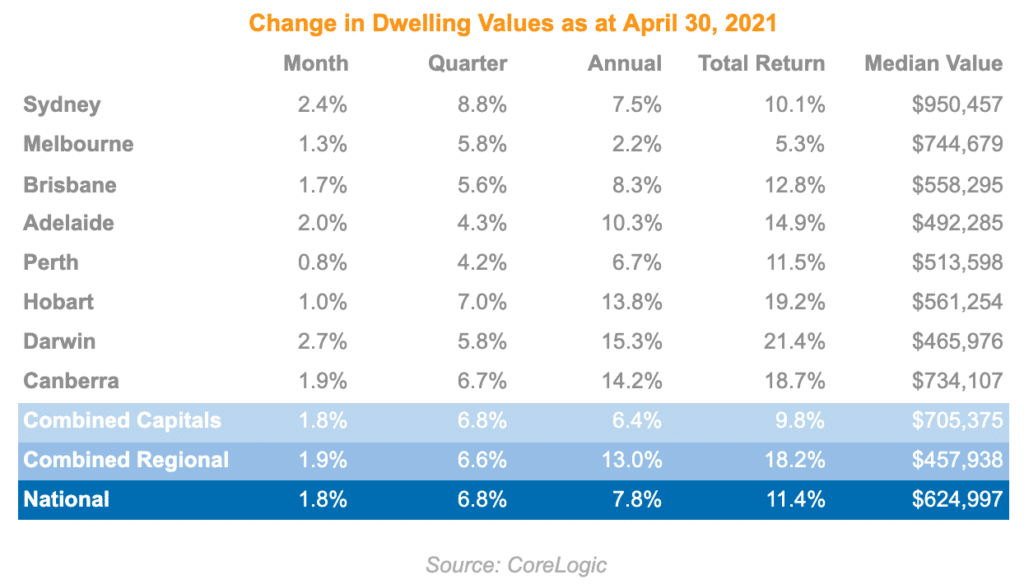
April was also the third month in a row that the capital city markets grew at a similar pace to the combined regional markets. From April 2020 to January 2021, regional markets had outperformed the capitals as a result of the population migration away from cities and metropolitan areas toward outer regions, triggered by the health crisis of 2020.
Most suburbs in these regional areas still have low-density housing and minimal supply to meet demand. Therefore, the recent surge of interest from new residents has brought intensified competition for housing and a drastic increase in prices has ensued – allowing regional markets to outperform throughout 2020.
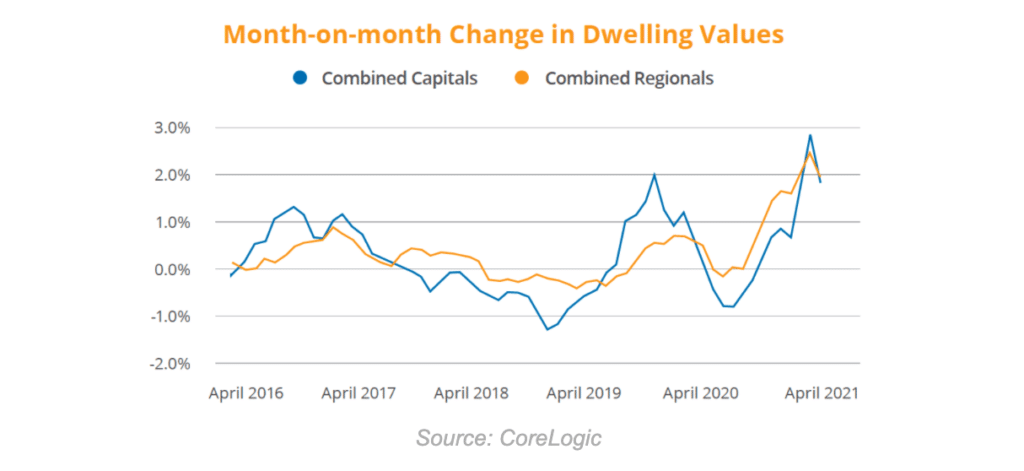
Capital city markets on the other hand went into combined negative growth from May to September 2020. This was mainly due to the price slump in Sydney and Melbourne surrounding restricted selling conditions, as evidenced by auction clearance rates. In the last week of April 2021, CoreLogic reports that the combined capital cities took over 2,400 homes to auction which resulted in an 80% success rate. Compare that with one year prior when just 47.5% of the 531 auctions reported returned a successful result.
Consequently, there are many arguments if regional markets may remain attractive over capital cities moving forward. This includes more affordable housing, a change in lifestyle towards low-density living, and the widespread acceptance and support of working remotely. However, the current surge in house prices across capital cities suggests demand for property in the cities is returning.
Freedom Property Investors CEO and Founder, Scott Kuru, adds: “It’s important that investors in 2021 know where the demand is shifting and what is fueling it. Anyone can pick a property in Australia and the chances of it being a reasonable investment are pretty good. But, when you have a team behind you that will hand-pick an area based on research, data and key macroeconomic factors both now and into the future, it could allow you to fasttrack your portfolio and expand your wealth substantially more.”
Looking at the Australian Bureau of Statistics data for capital city migration, there was a sharp decrease in net internal migration during the March 2020 quarter, to levels well below the long-term trend, around negative 10,000.
However, the latest update from the ABS, which covers the period to the December 2020 quarter, shows some indication that this short-term trend is reversing, which would help to explain the recent upswing in capital city house prices.
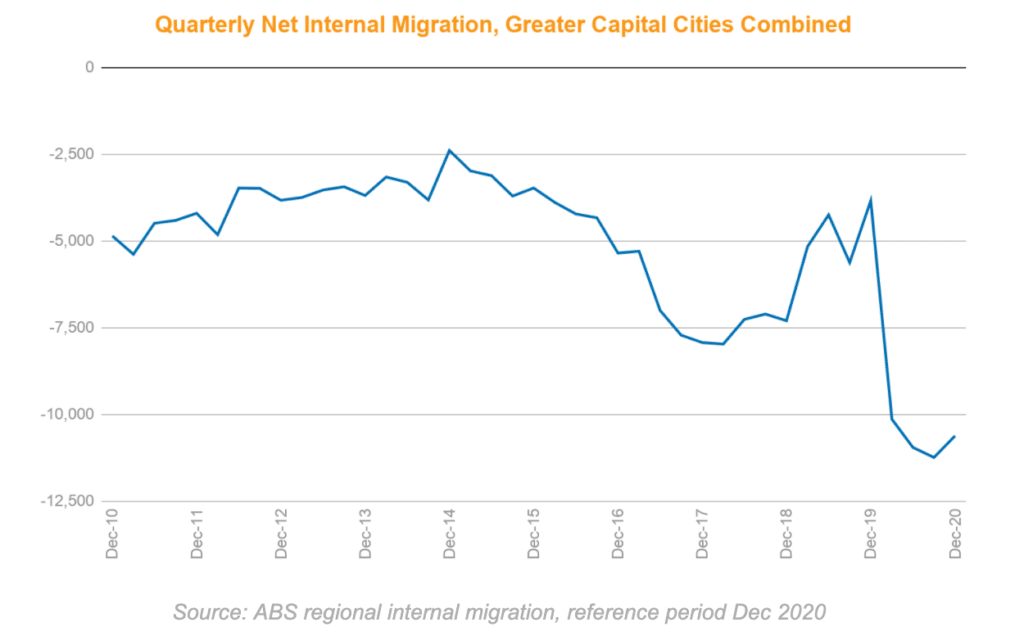
Another driver of this recent rise is the return of investors to the real estate market. Since 2017 investor lending, which historically is around 40% of total lending, has been on a decreasing trend.
However, March 2021 saw a monthly surge of 12.7% in lending to investors, resulting in a record $30.2 billion in new mortgage commitments. As a property investor, these lending figures are a leading indicator of demand for housing, and why banks like ANZ are predicting house prices to jump by up to 20 percent this year.

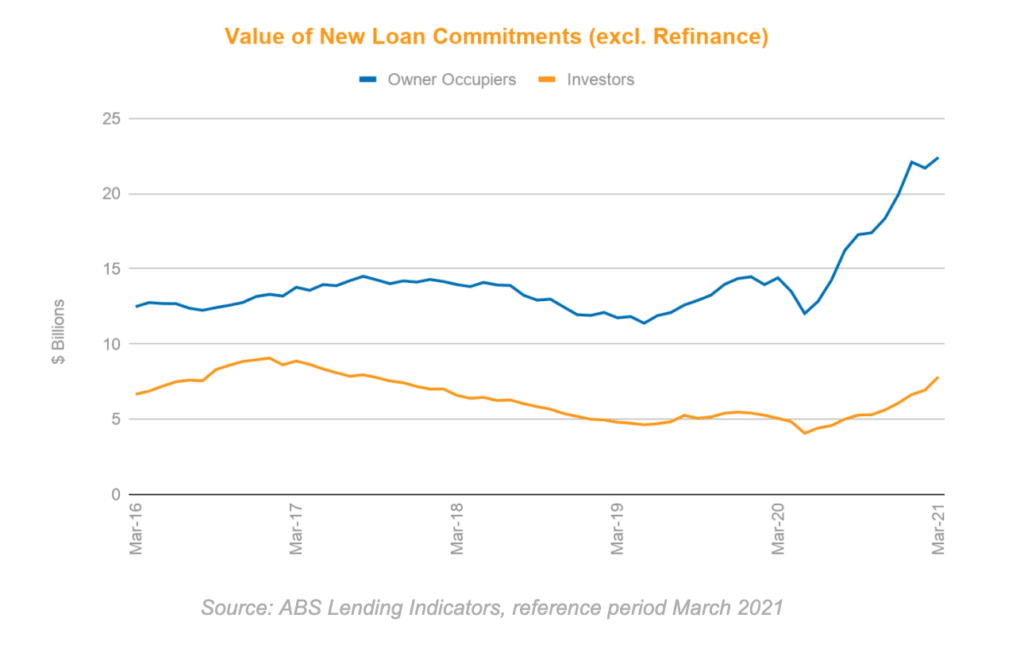
It is clear that across most parts of the country there still remains a shortage of housing, with rental vacancy rates in most capital cities below their one-year average. The only exception to this is Melbourne where the rate is affected by a glut of vacant apartments in the inner city. Comparatively, most of the middle and outer ring suburbs of Melbourne are showing vacancy rates below a healthy 3%.
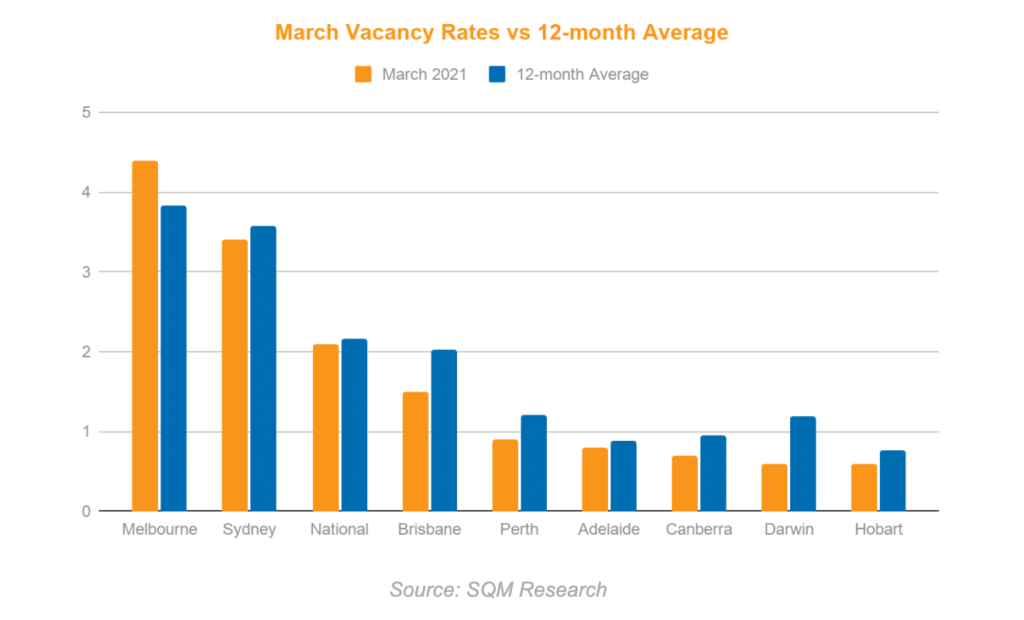
With stock levels remaining comparatively low, sourcing a reliable and profitable investment property can be difficult for the average investor that isn’t armed with the right data insights. It is crucial that consideration be made to the future projections for housing supply, as well as population growth and numerous other factors, that will impact an investors return in a particular area or region.
Thanks to our team of full-time property researchers, our members are often able to identify these trends early and are able to move quickly and confidently to capitalise on opportunities generally unseen by the average investor.
To find out more about property market projections for both capital cities and regional markets, attend one of our free and informative Online Masterclasses. Alternatively, get in touch with one of our experts today and discover your strategic property investment plan.
– Scott Kuru & Lianna Pan

